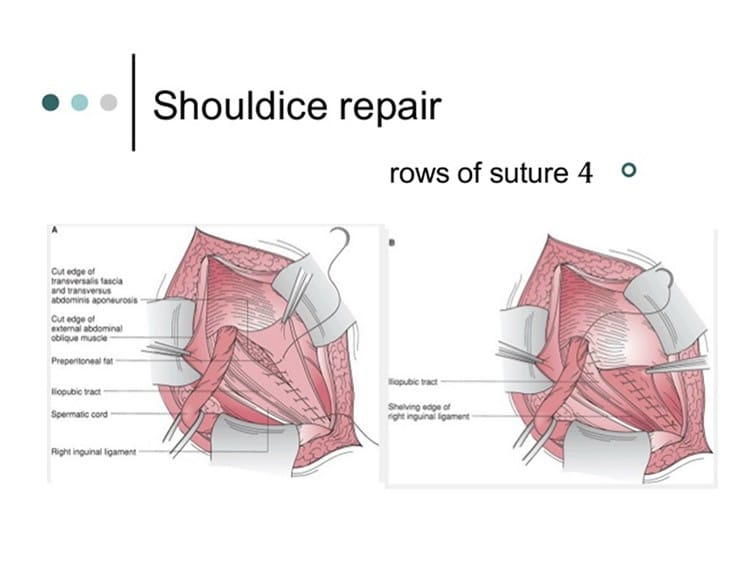Discover the advantages and potential drawbacks of opting for hernia repair without mesh, including considerations related to safety, recovery, and long-term outcomes.
What are Hernias?
Complex layers of tissues, consisting of muscles, tough layers called fascias, and tendons, protect our body. Hernia forms when there is a defect in this protective wall, which allows internal organs to protrude out of the body cavity.
How is Hernias Repaired
When a hernia causes discomfort and causes detrimental health complications for an individual, surgical intervention is necessary to repair it. The goal of hernia repair surgery is to close and support the weakened area in the abdominal wall. You can reinforce the opening of the hernia using either mesh or the body’s tissues.
No Mesh Hernia Repair
Recently, I have noticed almost all of my patients are asking about non-mesh repair of hernias and “Do I need a Mesh or not”. This question stems from the concern of having mesh complications. Even though these complications are rare, mentioning them is worthwhile, and there exists a genuine concern about the long-term impact of foreign materials left in our bodies.
The answer to that question is, “Yes, you can repair almost ALL hernias WITHOUT mesh.” No mesh repair was the norm before the introduction and popularization of mesh in the 1960s.
However, the fine art of non-mesh repair has been lost to newer generations of surgeons.

What to Expect During the Procedure?
You can perform a no-mesh hernia repair using the following surgical techniques:
- Open Repair.
- Robotic Repair.
- Laparoscopic Repair.
The objective of hernia repair surgery is to treat open wounds in the abdominal wall, repair the gap, and return the protruding tissues and organs to their natural position.
In a no-mesh repair, regardless of the technique used, surgeons close and secure the hernia by carefully stitching the tissues of the abdominal wall. In severe cases where the opening of the hernia is quite large, a skin graft, taken from another location in the body, may be necessary to properly close the wound.
Risks Associated with No Mesh Hernia Repair
No mesh repair is sometimes associated with a tugging or pulling sensation, and, if severe, this tension can even cause the muscles of the abdominal wall to reopen.
Benefits of No Mesh Hernia Repair
No mesh procedure uses nothing more than the body’s tissues, which reduces the risks associated with implants, such as rejection.
Nonmesh repair of hernia has several advantages. The most important of which is the absence of foreign material in the body and zero risk of short- and long-term mesh complications. Another important advantage is the significantly lower out-of-pocket cost, as a mesh is the most expensive component of a hernia repair.
For example, you can perform a non-mesh repair of an inguinal hernia under local anesthetic, and it can take as little as 30 minutes with a recovery period of 5-10 days.
How to Prepare for Mesh and No Mesh Hernia Repair
Before any hernia repair procedure, our Advanced Hernia Center will analyze the type and complexity of the hernia. Using diagnostic imaging techniques such as a US and/or CT scan. The diagnosis will dictate the type of surgery appropriate for repair as well as which procedure will produce the best results for the patient.
Pre-procedure instructions typically include refraining from eating or drinking at least eight hours before the operation. Patients who smoke will be asked to stop smoking at least two weeks before surgery. Smoking restricts oxygen flow in the body and impairs the body’s ability to heal itself.
Please discuss all current prescription medications with their doctor. Certain medications can affect the body’s ability to clot blood, which can lead to complications during and/or after surgery. The surgeon may provide specific instructions regarding medications for the days preceding the operation.
Postop No Mesh Hernia Repair Treatment
Recovery will vary for each patient, depending on the type of surgery performed and the overall health of the patient. Some patients may experience a low level of pain after an open repair procedure, while others may experience a high level of pain and discomfort after a laparoscopic procedure.
In the case of a minimally invasive laparoscopic procedure, patients can even go home the same day. Patients will be able to return to daily activities within one to four weeks. But will need to wait at least six weeks before returning to vigorous exercise.
It is important to follow all postoperative instructions given by the surgeon as well as attend all follow-up appointments. Doing so will reduce the risk of complications and help patients recover more quickly.
At IBI Healthcare Institute Advanced Hernia Center, we offer non-mesh repair in a Hernia Repair Center of Excellence environment. Call us or schedule a teleconsultation to inquire more. Moreover, you can also check our YouTube channel and watch the No Mesh Hernia Video.











